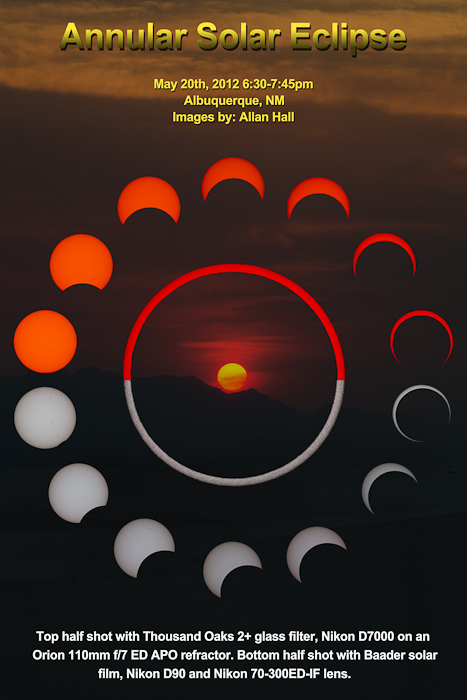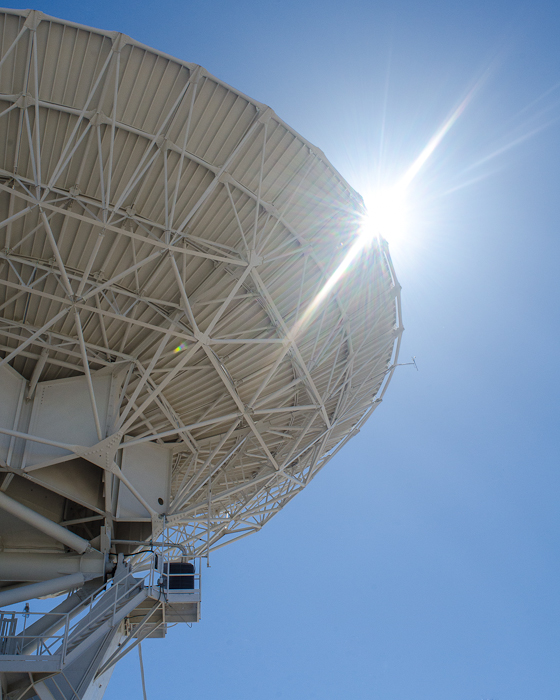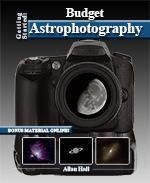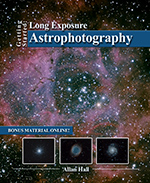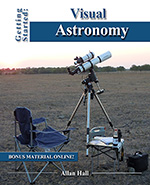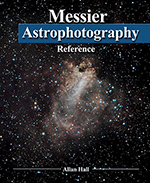My wife and I decided to travel to Albuquerque New Mexico for the annular solar eclipse on May 20th, 2012. An annular solar eclipse is where the moon comes directly between the sun and our little earth but isn’t close enough to the Earth to completely block out the sun. We choose that Albuquerque because it was far enough west to see the complete annular part of the eclipse and was directly on the center line where the moon would be exactly in the center. Here are some compilations of the images I took while there:


We also observed the solar eclipse through solar film and protected binoculars.
While not my first experience viewing a solar eclipse, my last experience was probably almost forty years ago. Although I do remember the experience as a small child, this was much more rewarding. If you get the chance to experience a solar eclipse of any kind I urge you to take some time off and go enjoy it.
While in the area, no astronomy buff would dare leave before seeing the National Radio Astronomy Observatory, also know as the Very Large Array or VLA. This has been included in many movies such as Contact, Terminator Salvation and Interstellar and is an absolutely awesome place to visit.
The pictures do not really convey how amazing, or huge this place is. Each dish in the Very Large Array are twenty five meters across, or over eighty feet. That would be impressive alone however there are twenty seven of these dishes on rails similar to a railroad track. Each arm in the huge Y pattern of the tracks is approximately thirteen miles long. This distance between the telescopes is why it is called the Very Large Array.
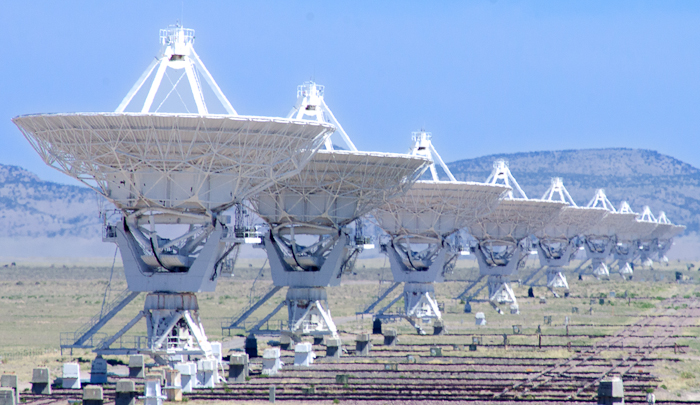

More information on the Very Large Array can be found on their website.
I hope you enjoyed the images of the solar eclipse and very large array!
Share this post!





